
















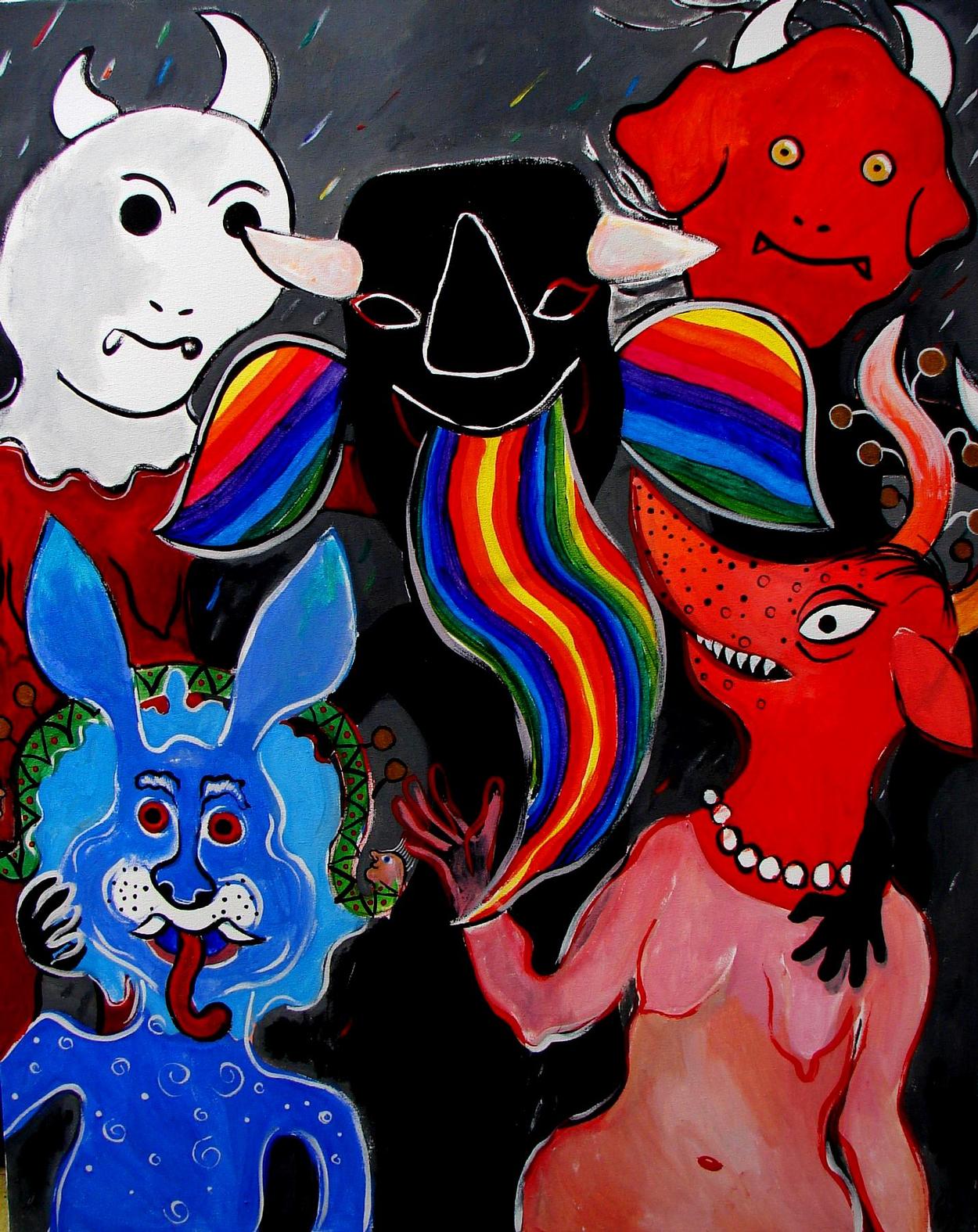
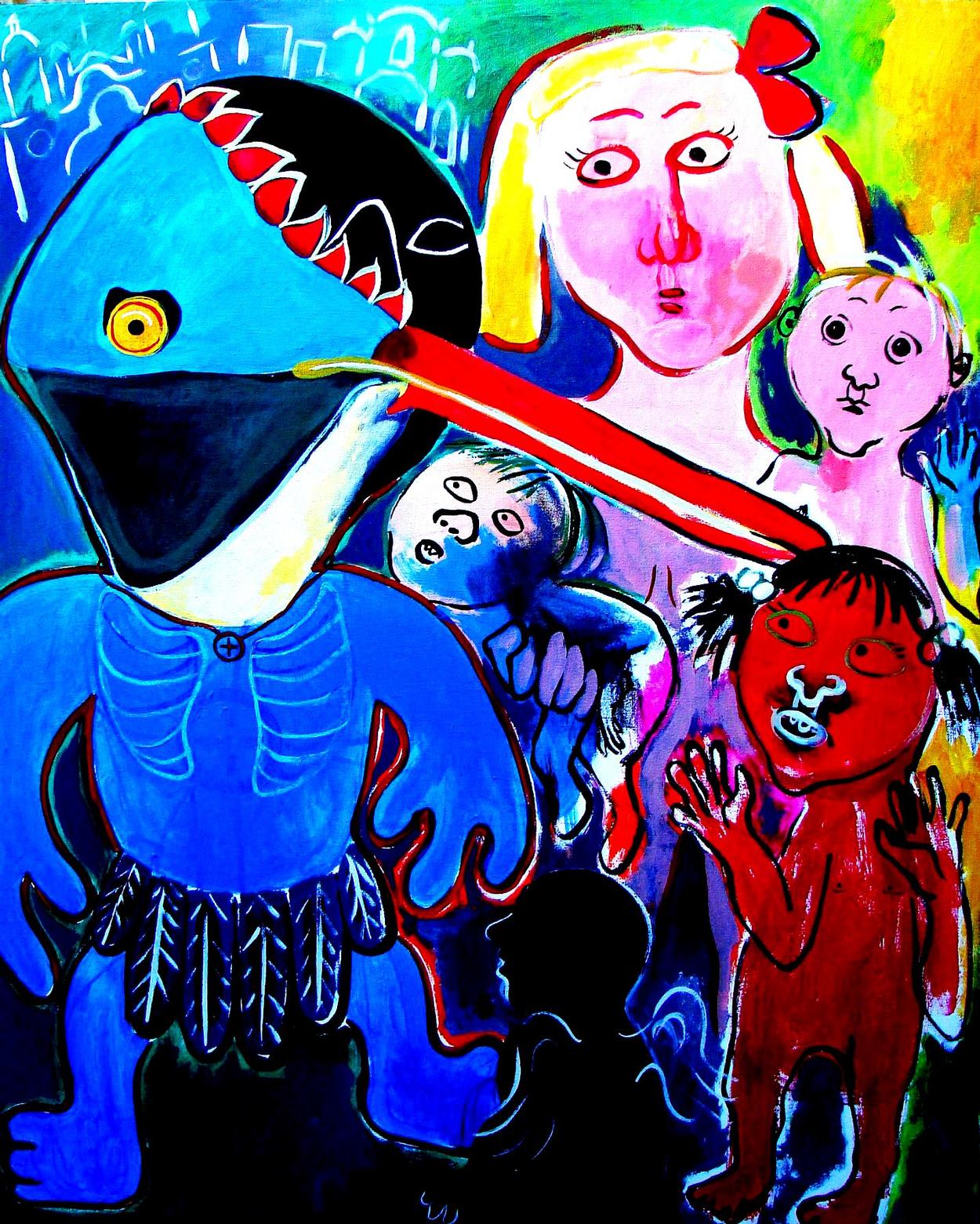
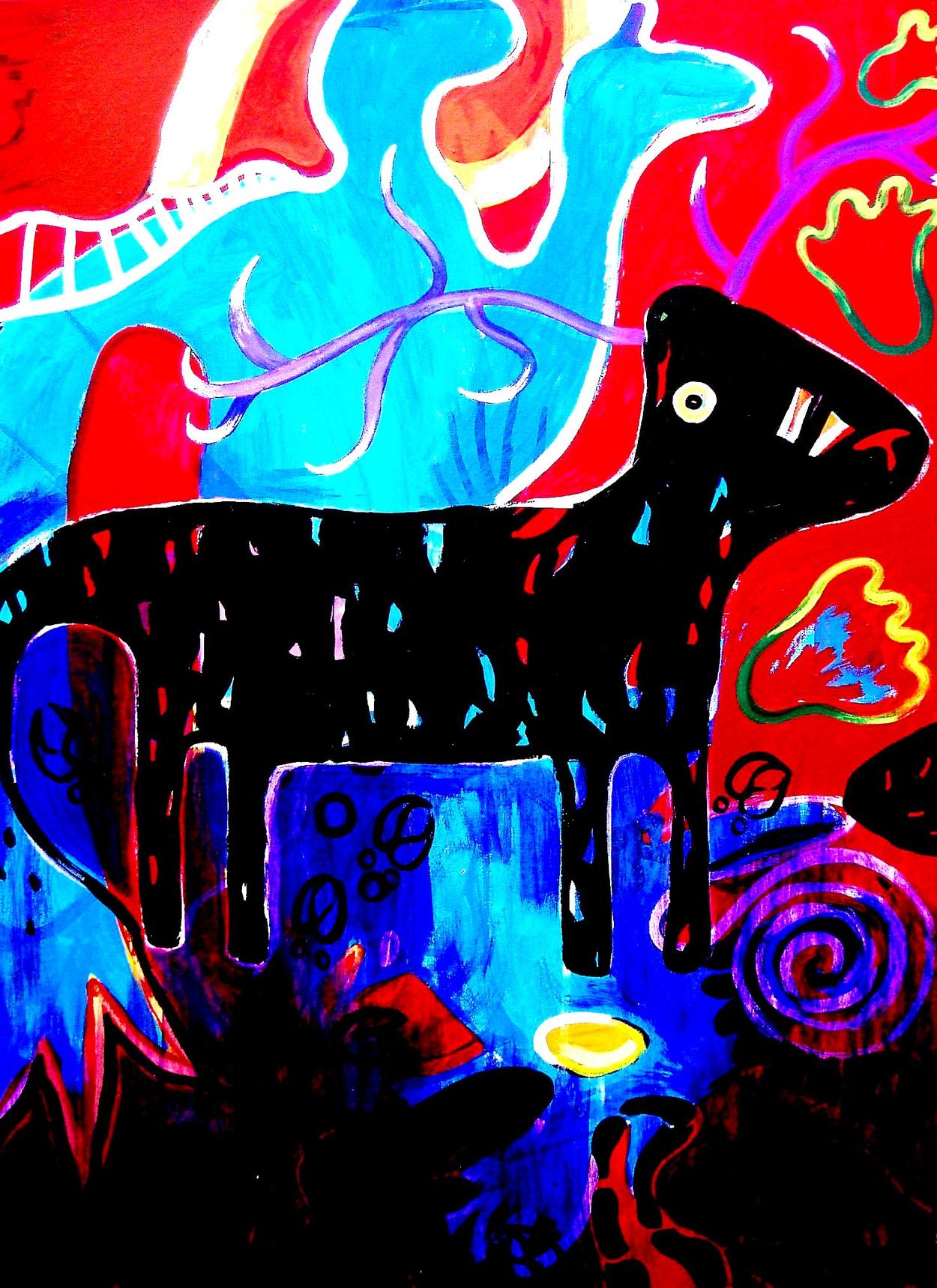
THE FALSE FACE SOCIETY
(80 x 100 cm) £659
The Native American Iroquois Tribe lived in longhouses in what is now called the Hudson River Valley in the 19th century. Their False Face Society was a society of healers. Their masks were living things that required care and nourishment. Native Indians created these masks from a dream about a mythological being. They could then be healed from a disease or sickness. They looked upon dreams as a guide to their lives.
The masks in this painting don't look anything like the real Iroquois Masks as these masks are sacred and should only be seen by people initiated into certain traditions. However, I think we ourselves live in a False Face Society of a very different, secular kind and therefore the title of this painting expresses irony.
KACHINA REVELATION (80 x 100 cm) £495
The Hopi tribe believed that some people die and are reincarnated again in another form in another world, while other people become Spirit Beings or Kachinas.
The word Kachina derived from Ka (respect) and China (spirit).
However, Kachinas are not only spirits of the dead, but spirits of animals, plants, minerals, stars and natural forces.
They are invisible forces of life - not gods, but intermediaries or messengers.
One of their chief functions is bringing rain, ensuring an abundance of crops and the continuation of life on earth.
FOOTFALLS FROM THE PAST (80 x 100 cm) £425
We walk daily on sacred land our ancestors walked on. In a very real sense we walk in their footprints.
Many tribal peoples teach our distant (mythical) ancestors literally became features in the landscape: when we sit on a rock, we sit on our ancient grandmother...
Living this sacred way makes it impossible to harm the Earth or sentient beings.
And shamanism teaches that All That Was as well as All That Will Be exists outside time and space. It can be accessed (consulted and even balanced or healed) using spiritual techniques.
If this interests you, check out my introduction course:
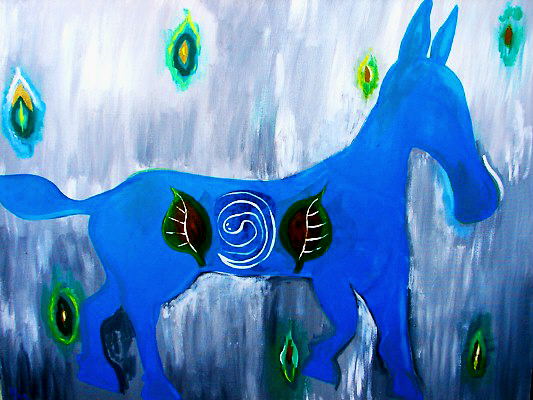
< SPIRIT DOG 80 x 100 cm £550
Native American tribes lived a life closely entwined with the spirit and animal world. Many of these cultures have been decimated, if not obliterated, by the onslaught of the European invasion. This represents immense tragedy: loss of lives, skills and knowledge on a scale that is hard to comprehend.
Their medicine men try telling us that a society fragments if it loses its sacred centre. At heart Native American traditions are about primordial truths beyond historic context.
That the Native American religious traditions represent one of the world religions in the same way as, say, Hinduism is a relatively new concept in the Judaeo-Christian world. However, as the materialism and destructiveness of the modern world view is becoming more apparent by the day, some people find themselves turning to Native American thinking for guidance on how to live in better harmony with the natural and spirit realms.
Here I would like to make an important point: because a lot of modern art lacks a spiritual dimension, many modern people ignore that dimension in traditional art as well. This is a big mistake!
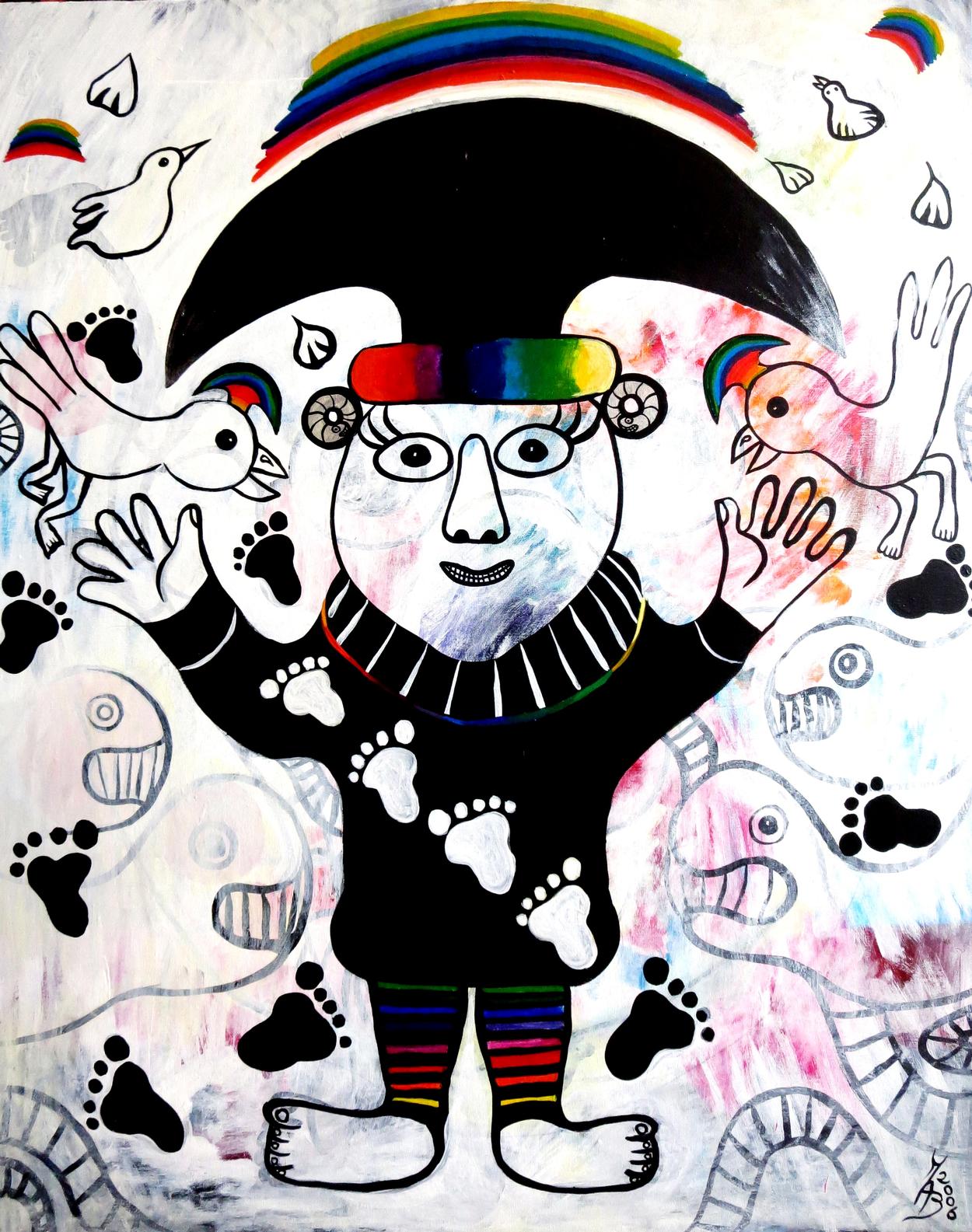
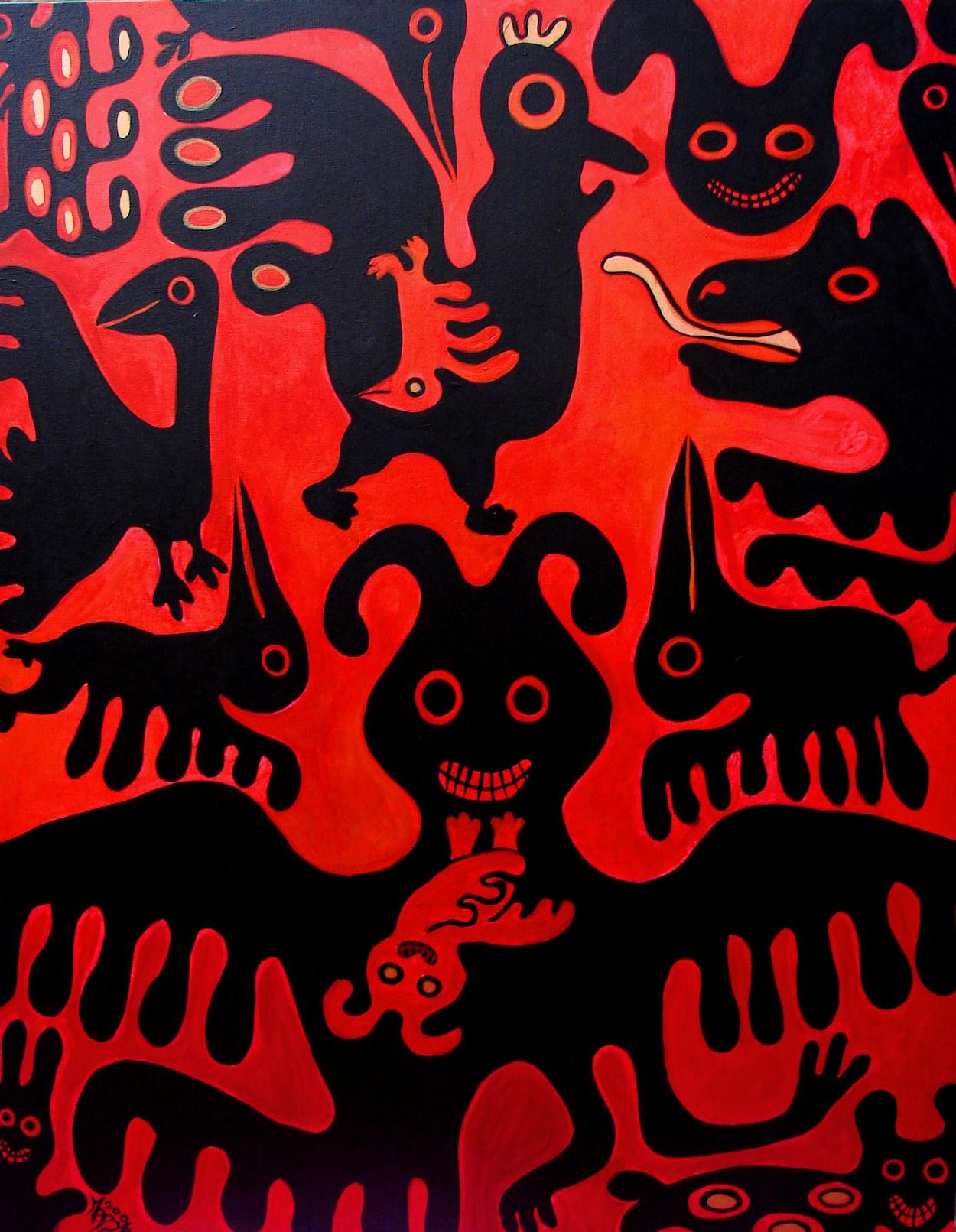
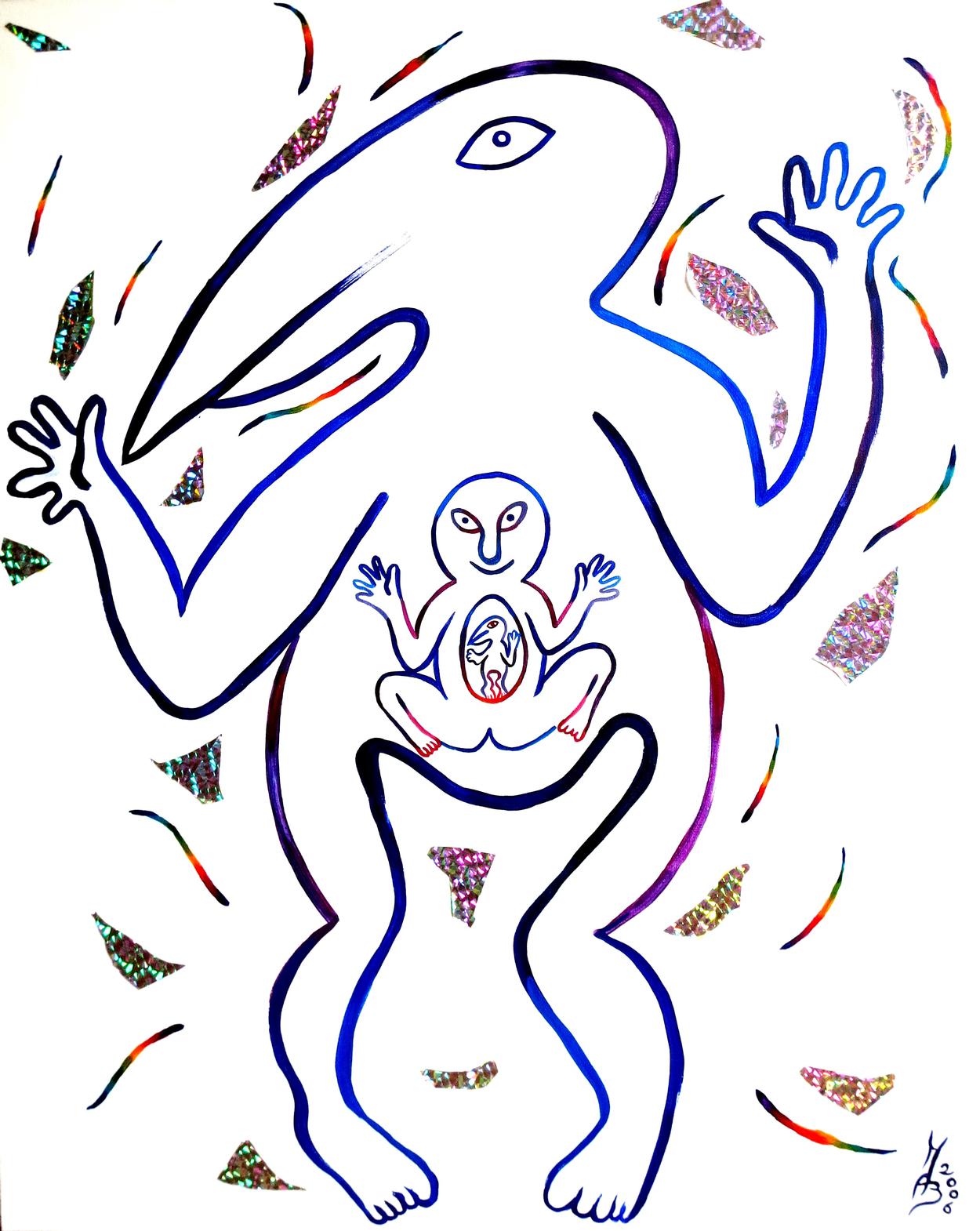
SHAMAN PERFORMING RAIN CEREMONY
(80 x 100 cm) £450
This painting shows a shaman performing a Rain Ceremony. This is a multi-layered picture, showing ladders and serpents (no pun intended on the game 'Snakes and Ladders'!). In Mesoamerica, like in Aboriginal Australia, serpents and water are related. The two birds are shaman's helpers.
CHULPAS SOLD
According to Mesomamerican mythology 'Chulpas' are creatures that lived before the Dawn of Time and before the sun rose over Pachamama (mother earth). The Jalq'a people of Bolivia weave these striking animal motifs on their aksus or overskirts. When my son Elliott (5) saw this painting in progress, he said it looked 'rather Halloweeny'!
PREGNANCY DREAMING 80 x 100 cm £350
Life is forever dreaming itself into being.
Parents dream children and children dream parents.
Then children become parents and the dreaming continues
Many cultures have Bird Shamans
There exist wonderful poetic legends about the Creation of the world, in what Native Americans call 'The Telling of the World'.One striking fact is how certain themes appear that we recognise from the Bible (see Bible Series). Now here once again we should be very careful. It is easy to assume these stories found their way into Native American folklore as white settlers and missionaries introduced the natives to the Bible. As a matter of fact many of these Native American stories have been handed down from generation to generation for thousands of years.
They pre-date the Bible as we know it. These stories tell us how the world came into existence, how the animals preceded human beings in populating the earth. How people and animals keep their balance in relation to nature by showing respect for the earth and caring for the gifts of the sky and the earth.
In the beginning Raven and Mink and Coyote helped the Creator plan the world. They were in on all the arguments! They decided which way the water in rivers should flow, that there should be bends in the rivers to create eddies where fish could stop and rest. They agreed that human beings would not live on earth forever. They would stay for a short time only, then their body returns to the earth and their spirit goes back to the Spirit World. All living things will be male and female. The Creator gave four names to the earth. Only a few people were allowed to know those names, as a privilige, for it gave them special spirit power. The names were for the sun, the rivers, streams and salt water, the third for the soil and the fourth for the forest. After some time everyone learnt the four names for the earth and people began talking to trees. Then Change came. The Change was a flood. When people saw the flood coming, they made a huge canoe. They loaded it with a couple of everything on earth. A male and female of every animal and plant. A child was born to the man and wife who had been in the canoe. Their child became the new Creator. Old Creator taught Young Creator what to do. He placed people all over the world in different locations. From then on people from different places spoke different languages.
The people created after the flood prophesied that a new language would be introduced one day. It will be the one and only language spoken by all people after the next Change. When people understand the language of animals - we will know that the Change is halfway. When people can talk to the forest - we will know that the change has come. The Flood was one Change. There will be another, but when, we don't know.
In days of Dire Beauty and Paradigm Shift this is an interesting story and message for us all....
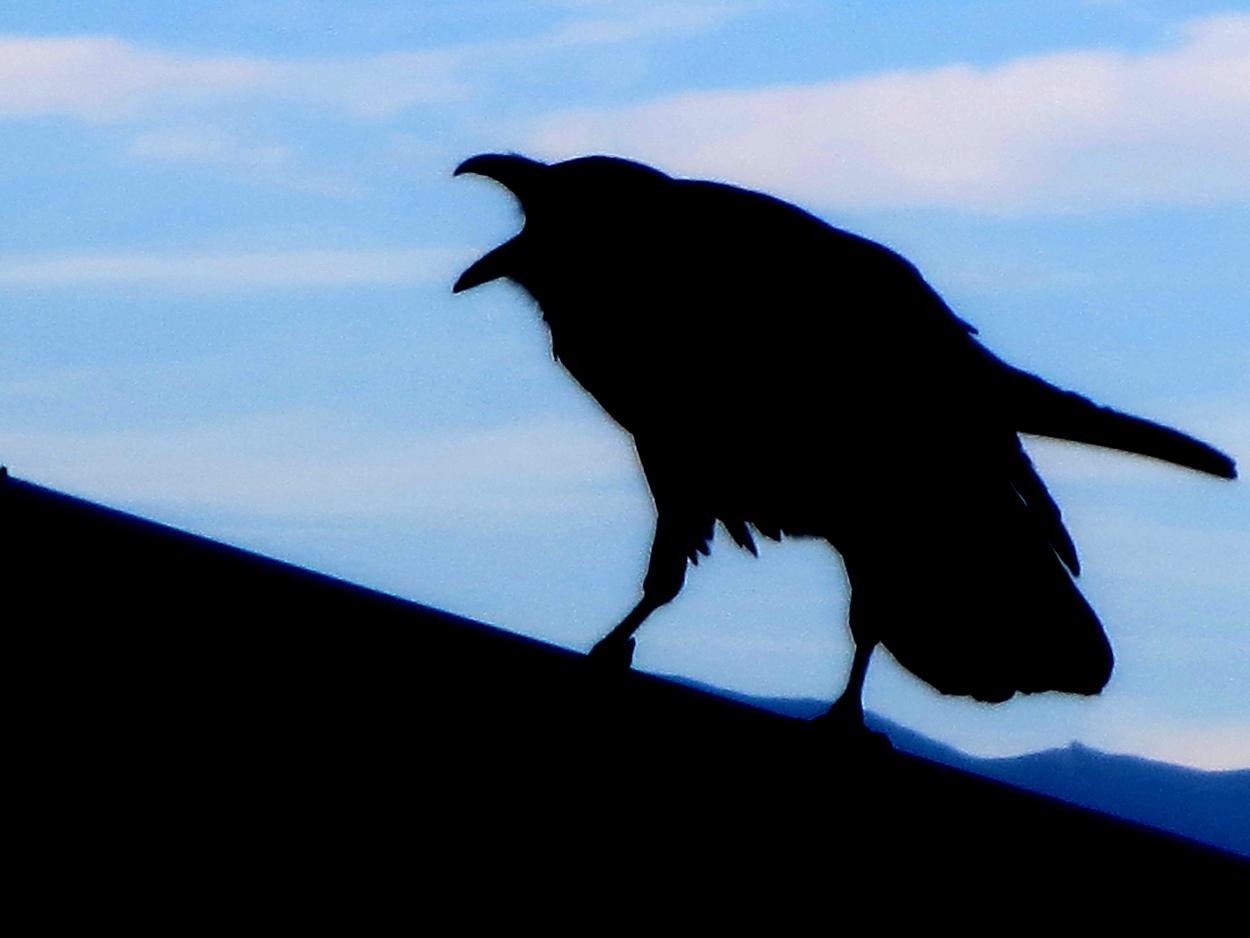
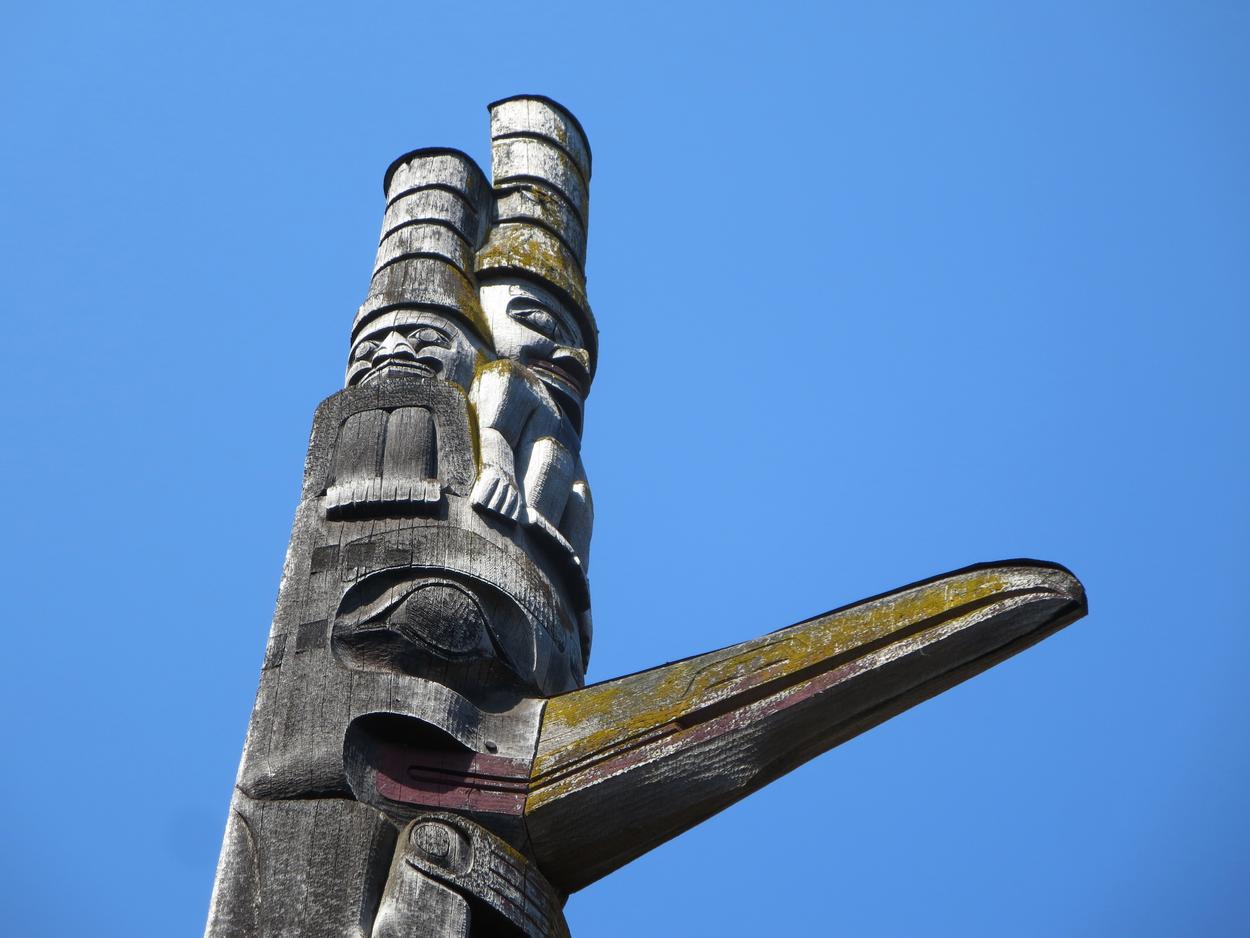
One has to bear in mind that there are, of course, countless differences among the many tribal traditions of the Americas.
Having said that, these are hierophanic cultures. The word 'hierophany' means, roughly, spiritual revelation. I.e. nature, features and creatures of nature manifest spirituality, they truly are spiritual beings.
Eagles, and many other animals, do not only bear spiritual significance but can in fact be manifestations of spirits themselves. For someone who has grown up in our culture this is a very difficult concept to grasp!
For Native Americans, nature is the theater in which the spirit realms and the human world intersect. Nature is where the higher realms can be seen in action, having effect!
'A man's attitude toward Nature around him and the animals in nature is of special importance, because as we respect our created world, so also do we show respect for the real world that we cannot see'
In the ceremony of the Sweat Lodge a medicine man (or woman) brings heated rocks into an enclosed space. The rocks represent primordial creation. He adds holy water to them so the lodge becomes hot and steamy. Those who enter the Sweat Lodge purify themselves by entering into this microcosm of primal elements: earth, fire, air and water. It reminds of the Scandinavian concept of a sauna - except the Finnish sauna doesn't quite offer the same spiritual dimension!
The Ceremony of the Sun Dance is held annually in the summer. A central pole is erected, representing the world axis, atop of which a buffalo skull is attached. The dancers go through an ordeal of fasting and dance around the pole, all offering up their prayers at the same time. The drum beats, representing the heart beat of the tribe and mankind. The dancers are all connected to the pole by an invisible cord penetrating their heart. The ceremony is about asking for blessings and harmony on earth. The Sun Dance is based on the concept of sacrifice, like rituals in many other world religions. Of course it remind of our tradition of dancing around a maypole to celebrate midsummer.
In the year 1519 a group of Spanish soldiers on an exploratory voyage from the Spanish colony in Cuba encountered a great civilization in the Valley of Mexico. From a snow-capped mountain pass they looked down on a series of interconnected lakes and the city of Tenochtitlan.
Geographically Mesoamerica runs from the Valley of Mexico down across Guatemala and Honduras to Western Nicaragua and Costa Rica. Scholars use the name for a timespan of 22,000 years and the lands peopled by the Maya and the Aztecs. It largely coincides with what we call Central America today.
These people used a highly complex ritual calendar (see also the Language Series). Priests marked the passing of time and predicted the future based on two calendars. One was a solar calendar of 365 days, linked to the passing seasons. The other was a ritual calendar of 260 days, thought to be based on the length of a human pregnancy. The period needed for a particular day in the 365-day calendar and a particular day in the 260-day calendar to coincide was 18,980 days or 52 years of 365 days. This measure, called the 'bundle of years' by the Aztecs, was invested with great significance. The end of each 52 year period was seen as a moment of great danger, at which the gods might decide to end the world.
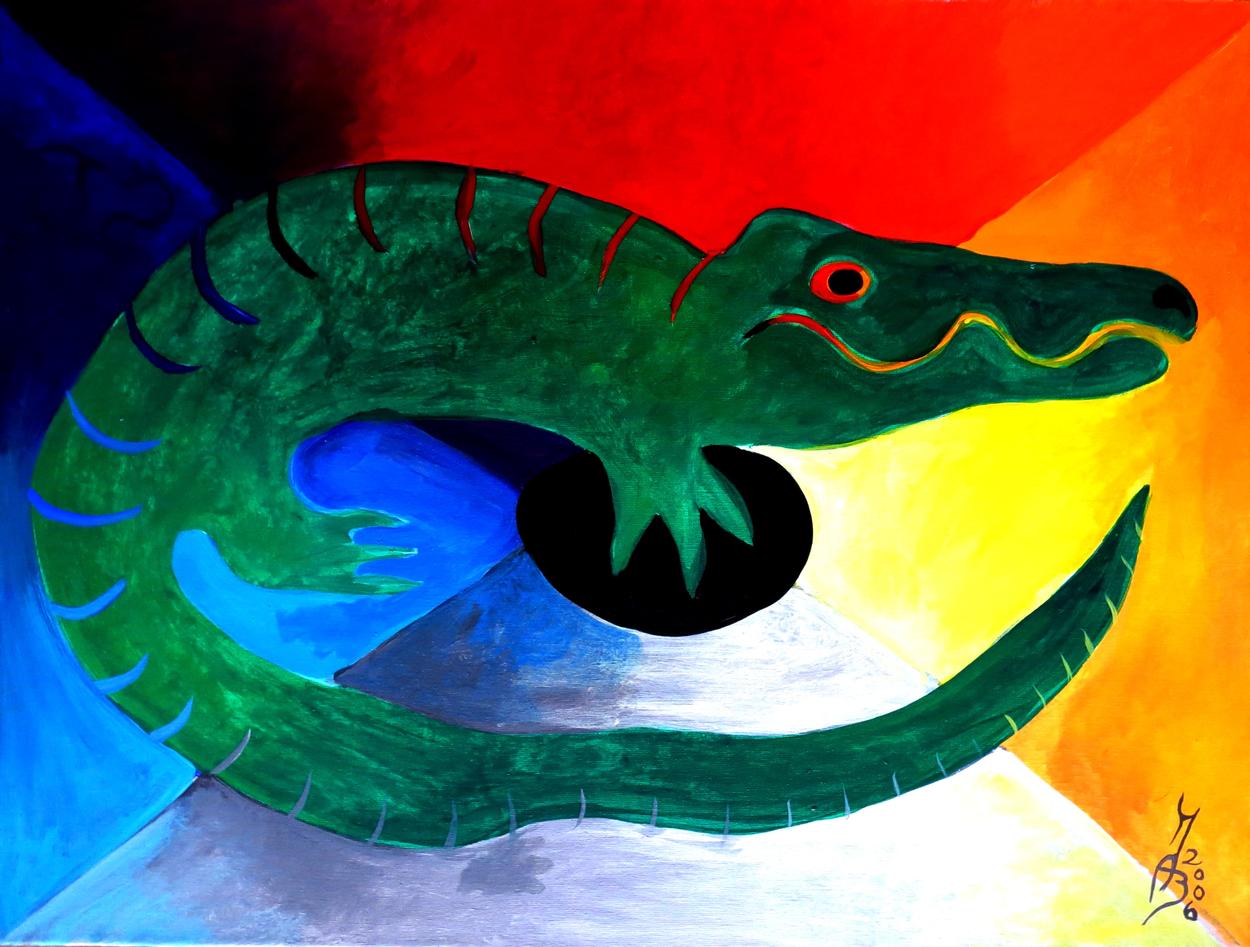
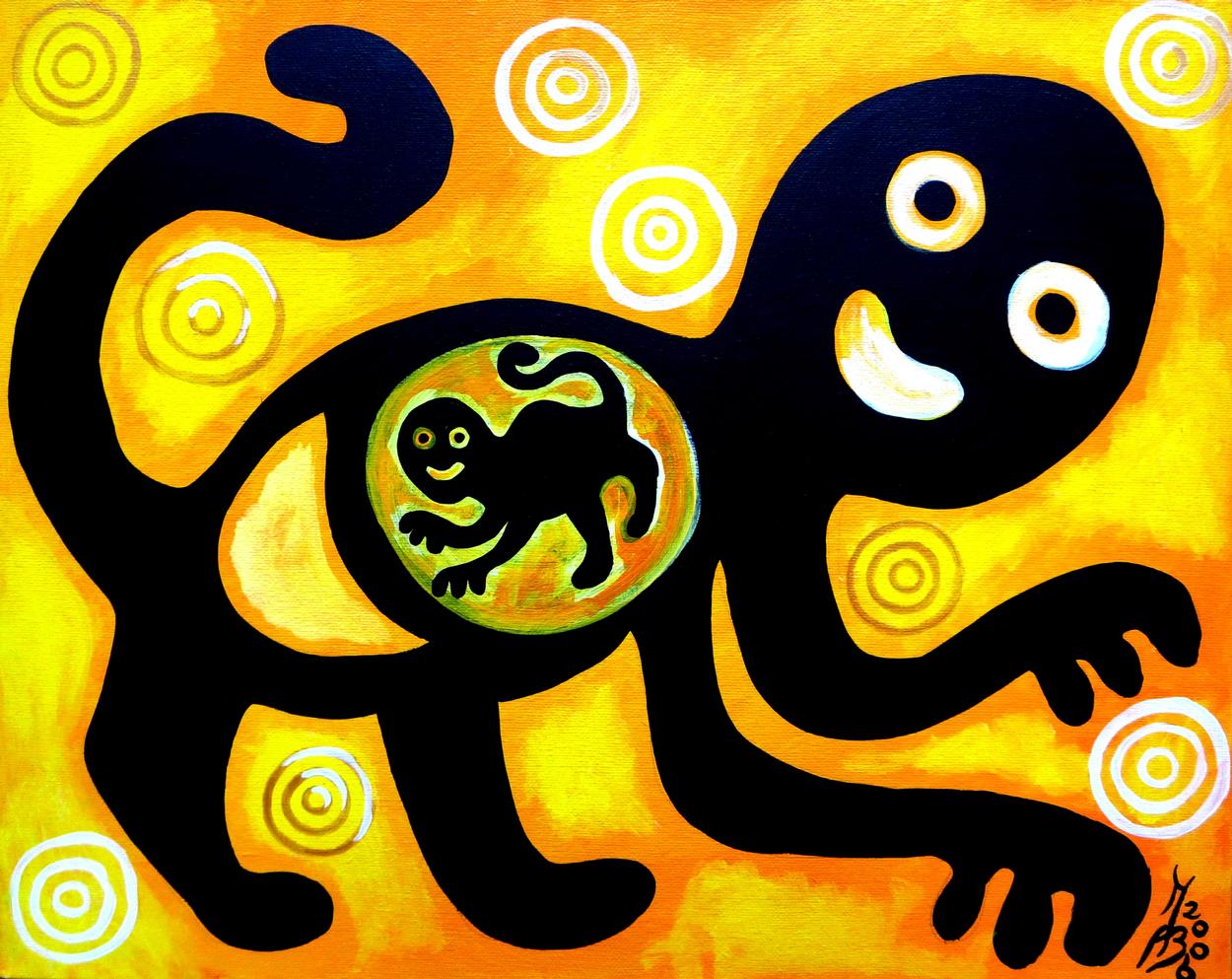
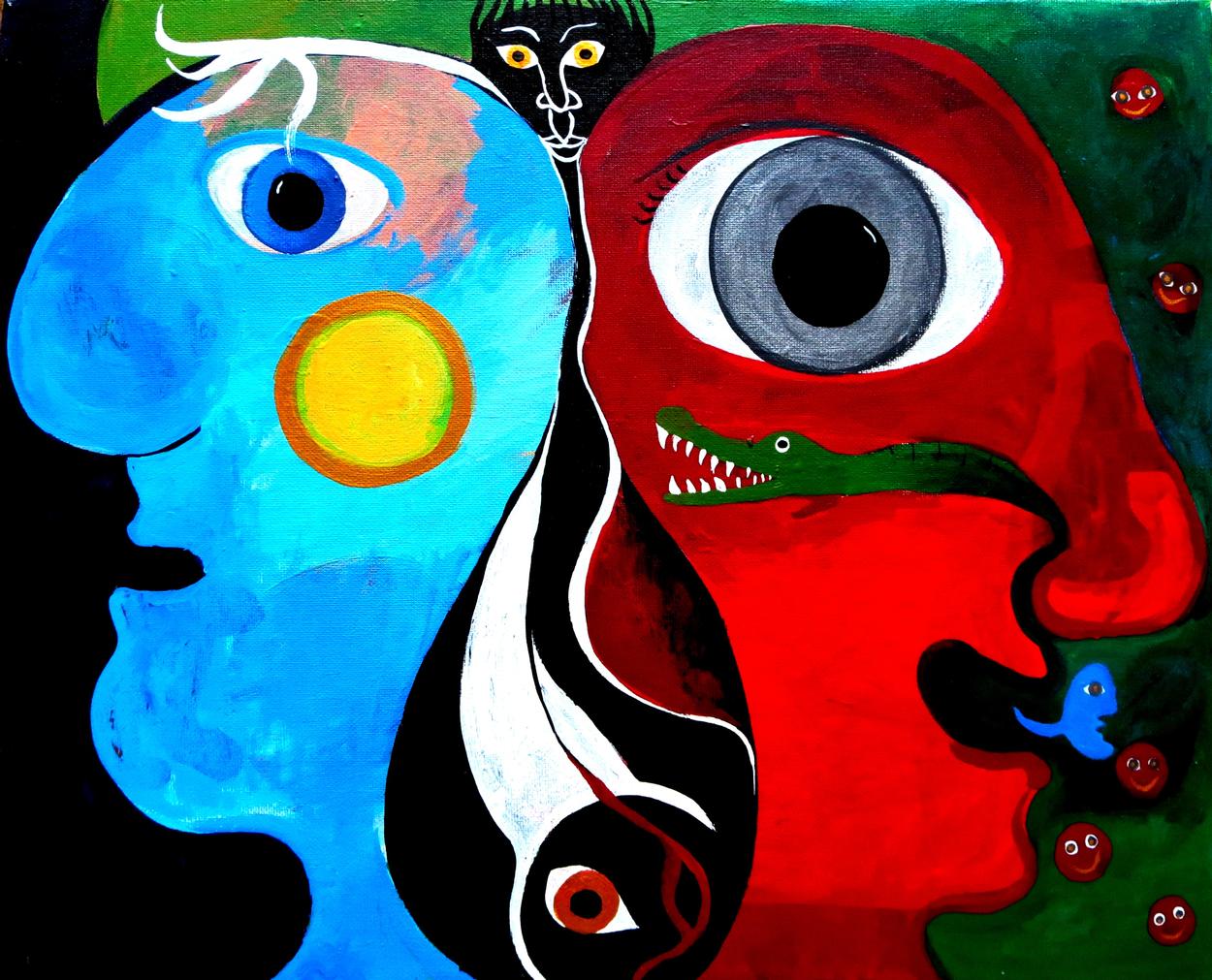
ILHUICATL & THE PRIMORDIAL CROCODILE
46 x 81 cm £299
In one Aztec creation myth the earth was conceived as a giant crocodile floating in primal waters. Each of the four quarters had specific names, colours and influences associated with it: East = Tlacopan, 'Place of Dawn', yellow, fertile and good. North= Mictlampa, 'Region of the Underworld', red, barren and bad. West = Chihuatlampa, 'Region of Women', blue/green, unfavourable, humid. South = Huitzlampa, 'Region of Thorns', white. Centre: Tlalaxico, Navel, black. The waters surrounding the inhabited land were called Ilhuicatl, the celestial water.
(From the Penguin Dictionary of Religions)
PREGNANT MONKEY DREAMING
40 x 50 cm £265
All That Is dreams.... not only human beings, also animals, plants, trees, rocks, mountains, clouds and stars.
If we want to create a different reality we need to dream it into being first.
For a different global reality to occur we need to all dream collectively.
Our children LOVED playing with monkeys on a beach in Honduras - the inspiration for this painting.
THE SORCERER OF FATAL LAUGHTER
(40 x 50 cm) £265
The Popol Vuh or sacred book of the Maya People documents their beautiful creation stories featuring a wonderful cast of hero twins, jaguars and so forth. God (or the Great Creator) took ears of yellow corn and of while corn and ground them into meal. With the corn meal he made nine kinds of liquor and these became man’s strengths and energies. With the dough he shaped four men, very strong and handsome. They were: the Wizard (or Sorcerer) of Fatal Laughter, the Wizard of the Night, the Careless and the Black Wizard. They were gifted with intelligence and they managed to know everything in the world.
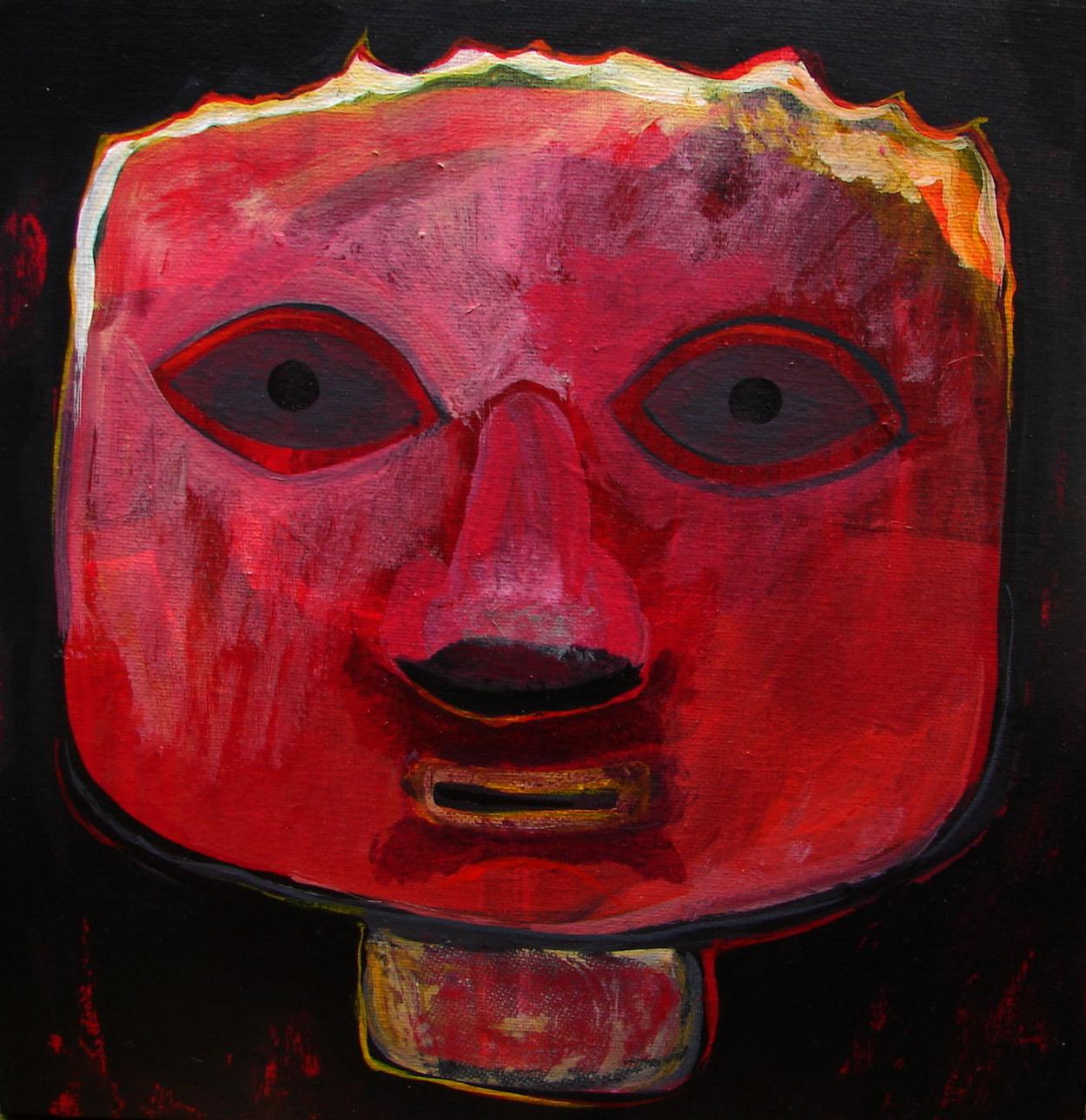
Another important central element of the Mesoamerican civilisation was the use of human blood sacrifice to honour the gods. Among the Aztecs, vast lines of prisoners were paraded up the steps of steep temple pyramids to be sacrificed by having their hearts ripped from their chests. They called the human heart the 'Eagle Cactus Fruit'. The Classic Period Maya more commonly decapitated their victims. Both Mayan and Aztec worshippers also offered their own blood to the gods by means of self-inflicted wounds. The humming-bird was seen as a symbol of this: the blood was let this way as 'honey drawn from a flower by a humming-bird'.
< MESOAMERICAN DEATH MASK I
> MESOAMERICAN DEATH MASK II
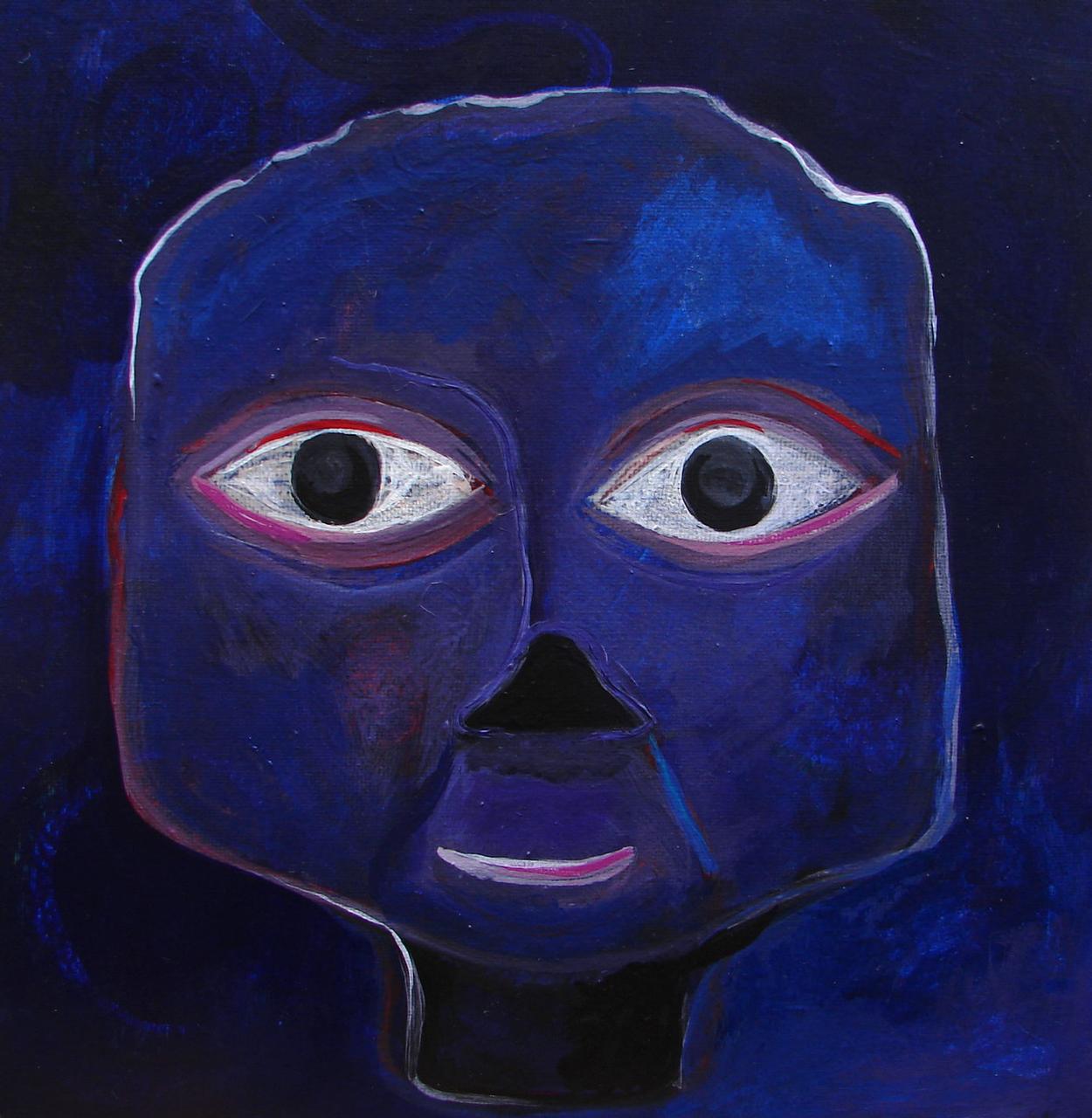
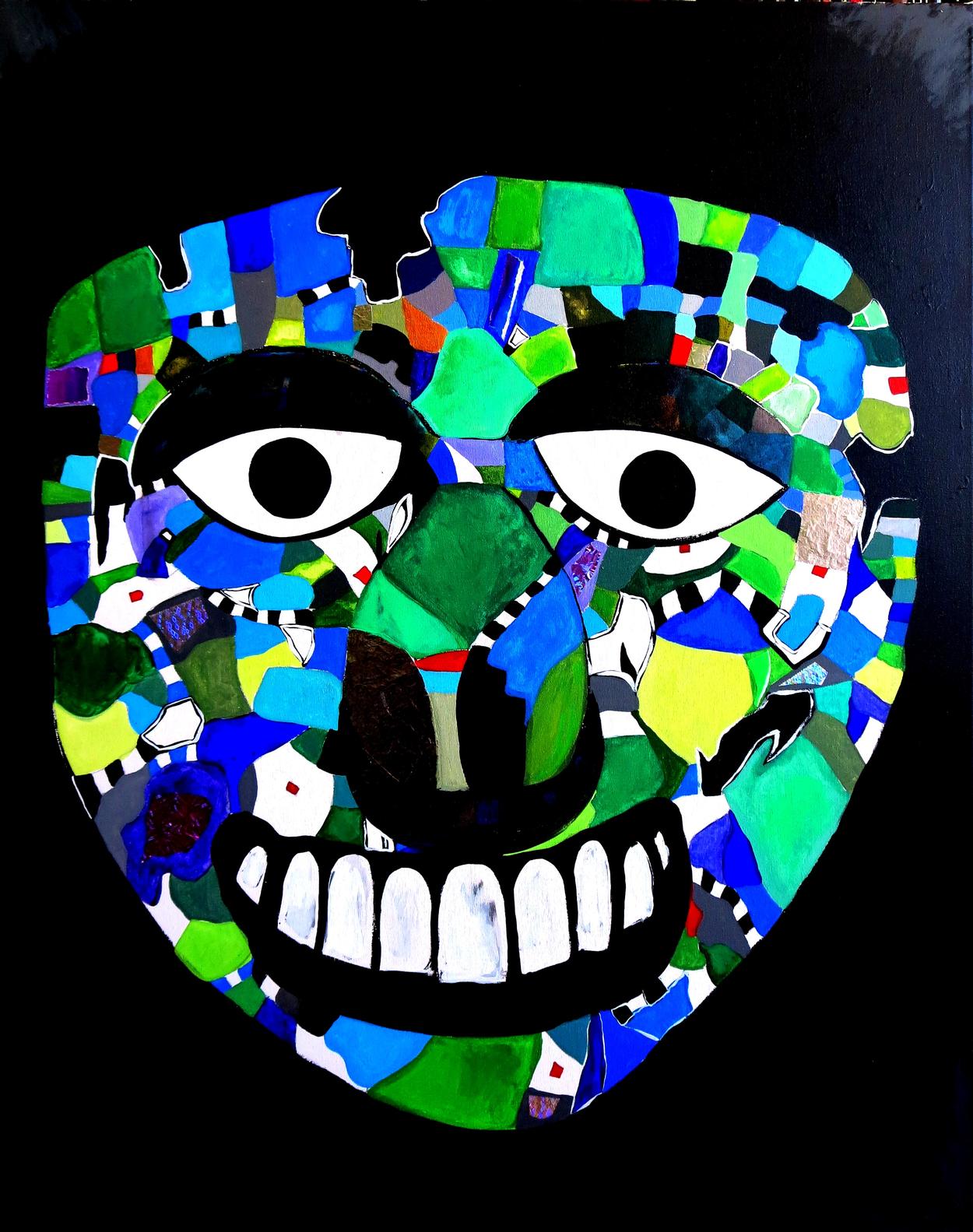
Another basic common element of Mesoamerican civilisation was a ball game played on a court shaped like a capital letter L. The court had sloping or vertical side walls. Some courts had rings high up on the walls. Extra points could probably be scored by getting the ball through the hoop. This was a difficult thing to do since players were not allowed to use their hand or feet, only their hips, elbows and knees! This game seems to have been seen as an enactment of cosmic struggles and therefore as a sacred act (hard as it is to understand this. For comparison read in the Native American Series about "hierophany or spiritual revelation").
The Aztecs saw the ball game as a clash between light and dark forces, between Quetzalcoatl ('The Plumed Serpent')and his dark brother Tezcatlipoca (The God of Death). The Maya viewed it as a reenactment of the myth cycle in which the Hero Twins go to the underworld to overcome the gods of that fearsome realm.
< AZTEC MASK > KABAWIL
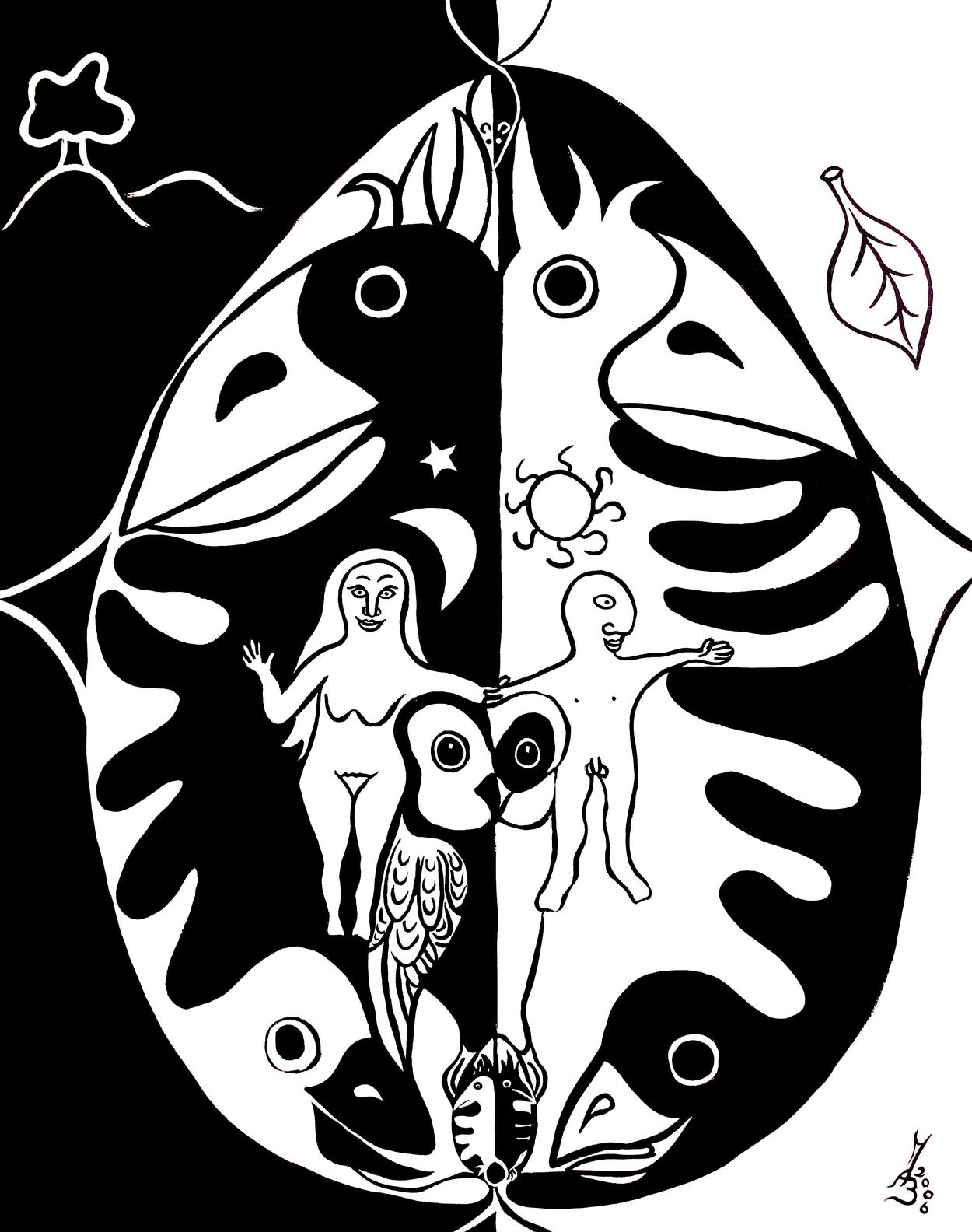
Scholars treat all surviving records of the Mesoamerican history with caution. The material is full of repetitions and contradictions. This was because Mesoamerican peoples looked to the past for justification of the present. They kept fiddling around with details and re-writing accounts to establish that their destiny was to dominate other peoples and expand their territories.
The facts were made to fit their perspective on things. This is also known as re-writing history. We still do this today.
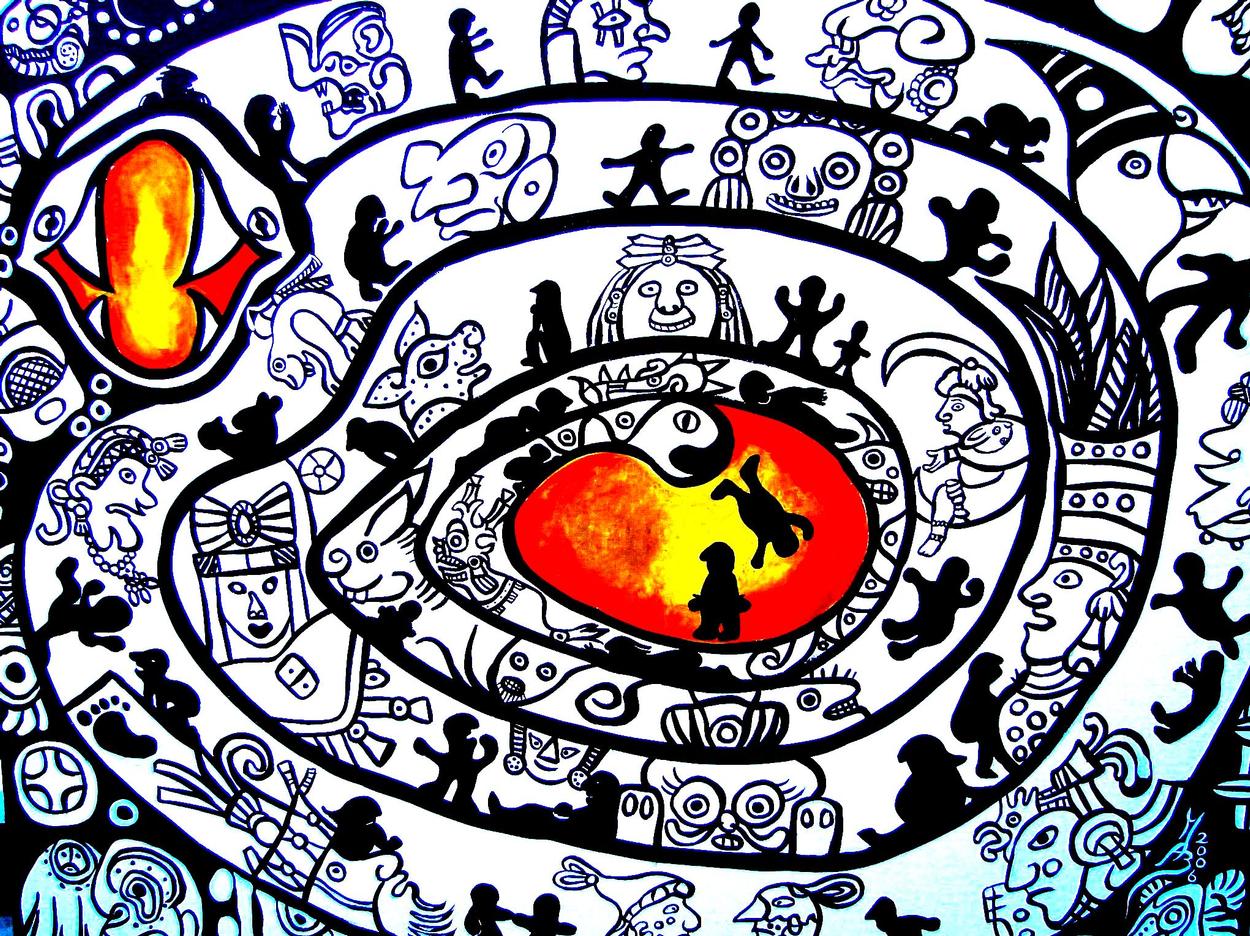
Apart from the public rites of sacrifice conducted by the priests and warrior class, ordinary people had a strong and enduring belief in shamans.
Shamans were people gifted with visionary and religious powers who made journeys of psychic discovery on behalf of the tribe,
Shamans could conjure the powers of the spirit world and influence the destiny of individuals and the city-state.
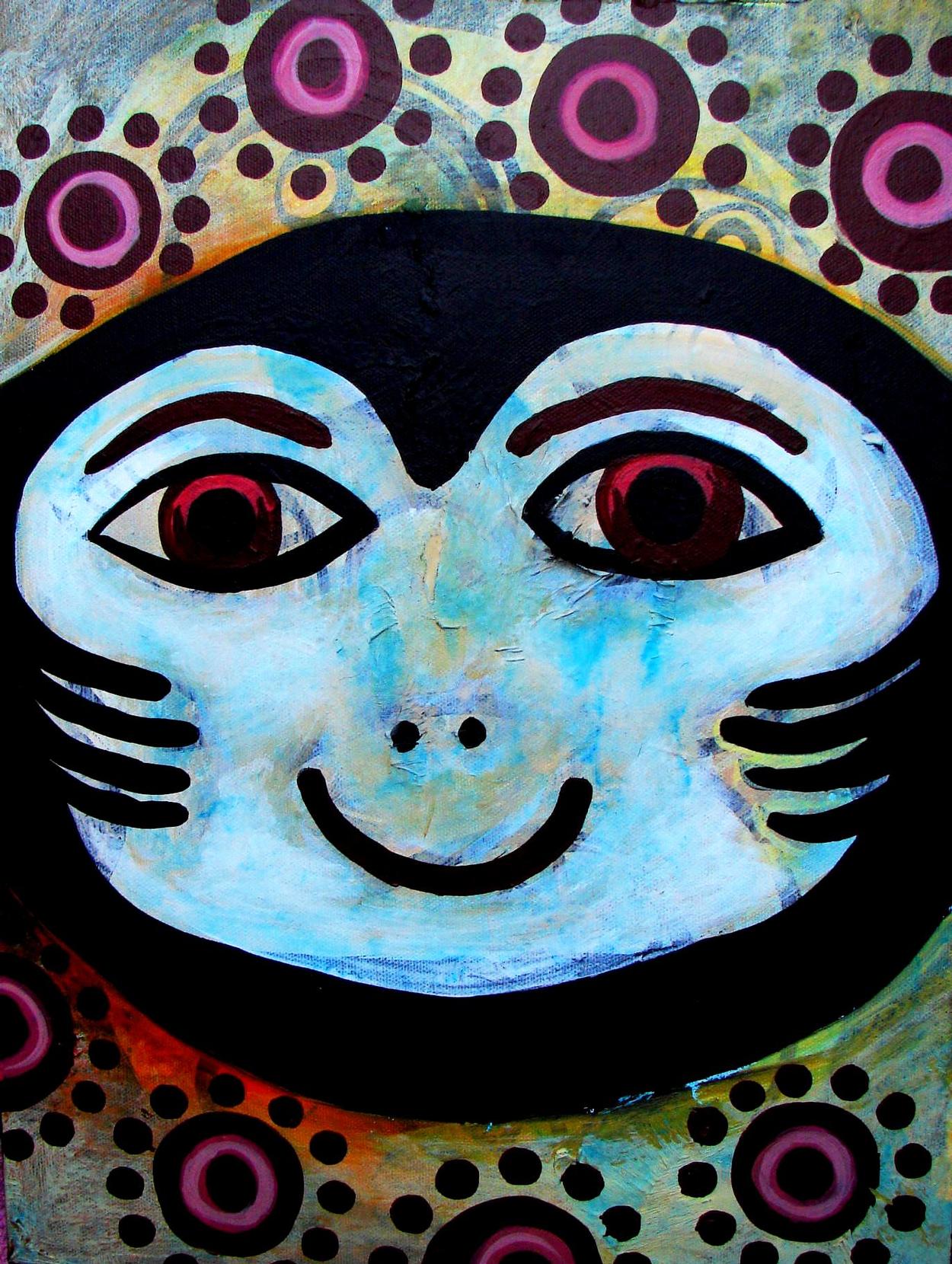
When the European visitors first arrived on the scene, the Aztecs were waiting for their God Quetzalcoatl (The Plumed Serpent) to return. Quetzalcoatl had departed by sea heading east and vowed to return from that direction. The Spaniards made their landfall at the exact spot and in the exact year that Quetzalcoatl's second coming was promised for. The Aztec ruler, Moctezuma, was unsure how to welcome them. First he sent supplies and magnificent offerings. Some of the food had been doused with blood of a sacrificial victim in good Aztec tradition! (One can but guess what the Europeans made of this...) Eventually the two parties came to blows. After prolonged hostilities, the Spanish delegation won - and the Aztec empire was no more on the 13th of August, 1521.
Jaguar imagery was used to honour the shapeshifting shamans. The jaguar's furtive behaviour and deadly capacity to hunt in the hours of darkness made him one of the key-allies of the shaman on his demanding spirit journeys. Shamans were believed to be able to transform themselves into jaguars during trances. Eventually the jaguar became the principal animal form of the god Tezcatlipoca, the patron deity of shamans and god of the night.
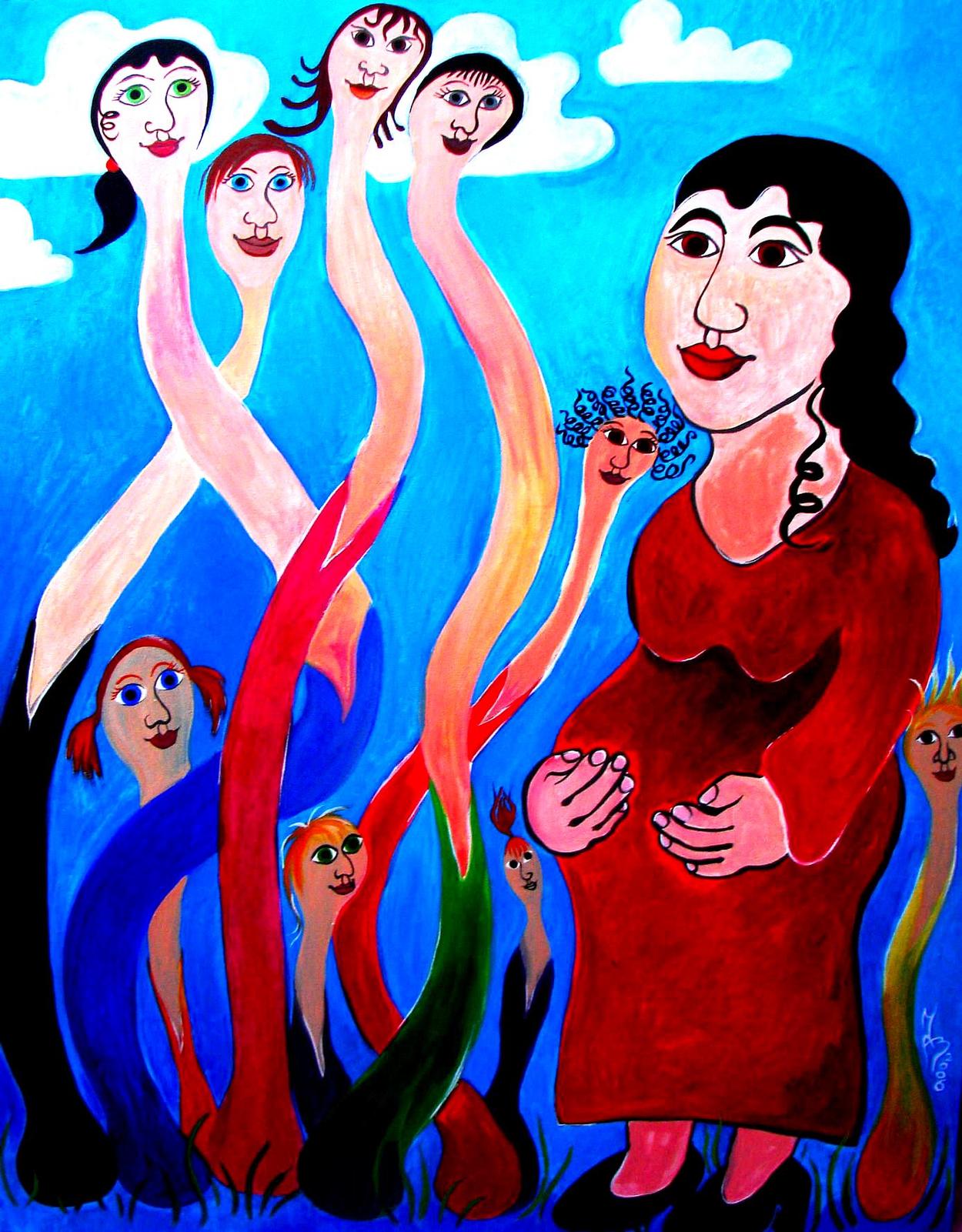
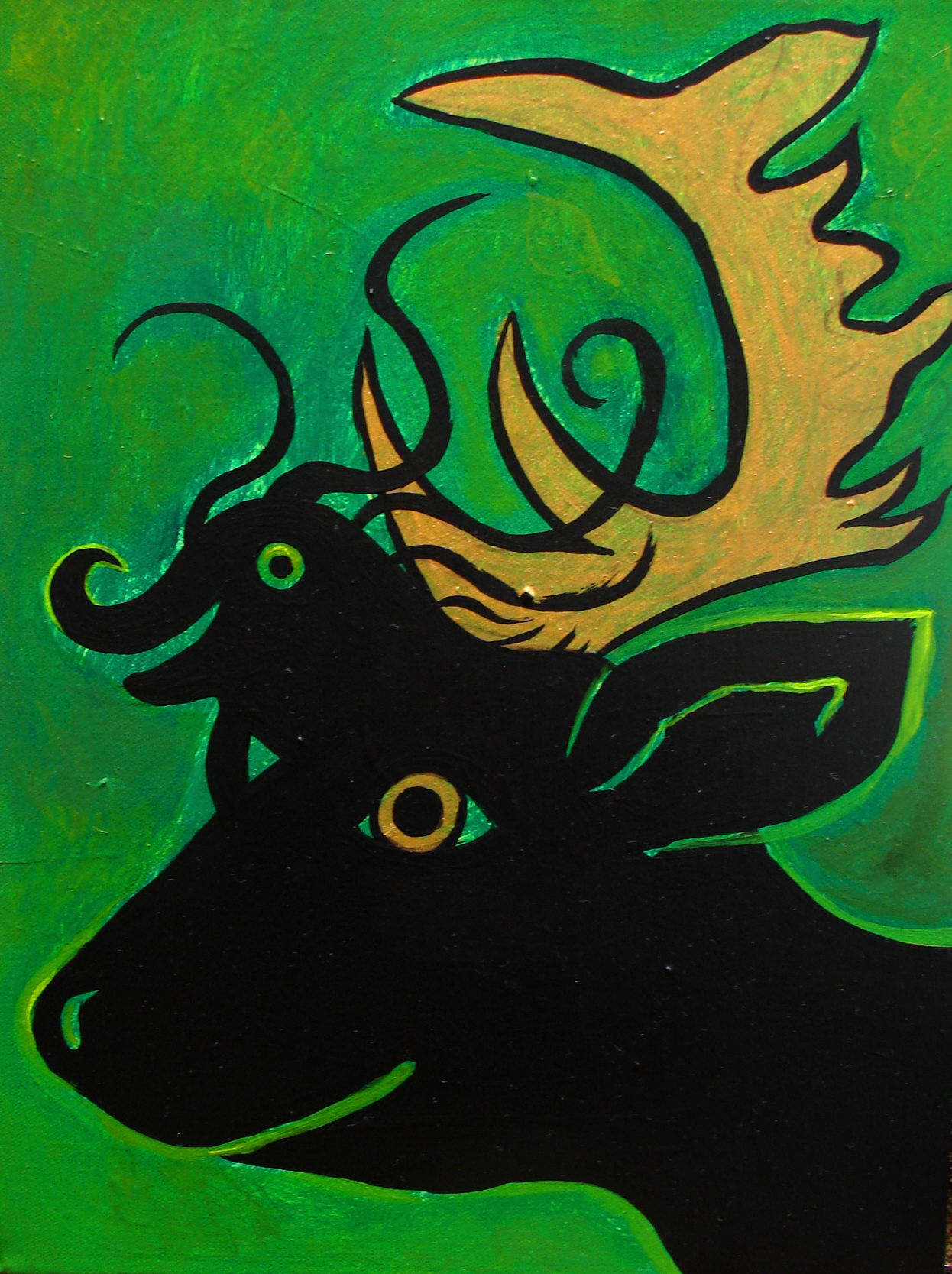
< CURUPIRA (30 x 40cm) £155
Father of the Game
The Curupira is a small hairy goblin who punishes those who abuse nature.
Sometimes he rides on deer's heads. He whistles to death anyone who kills too many animals or wastefully cuts down a tree.
The rainforest (and the world) needs a Curupira more than ever before!
> SPIRIT JAGUAR SOLD
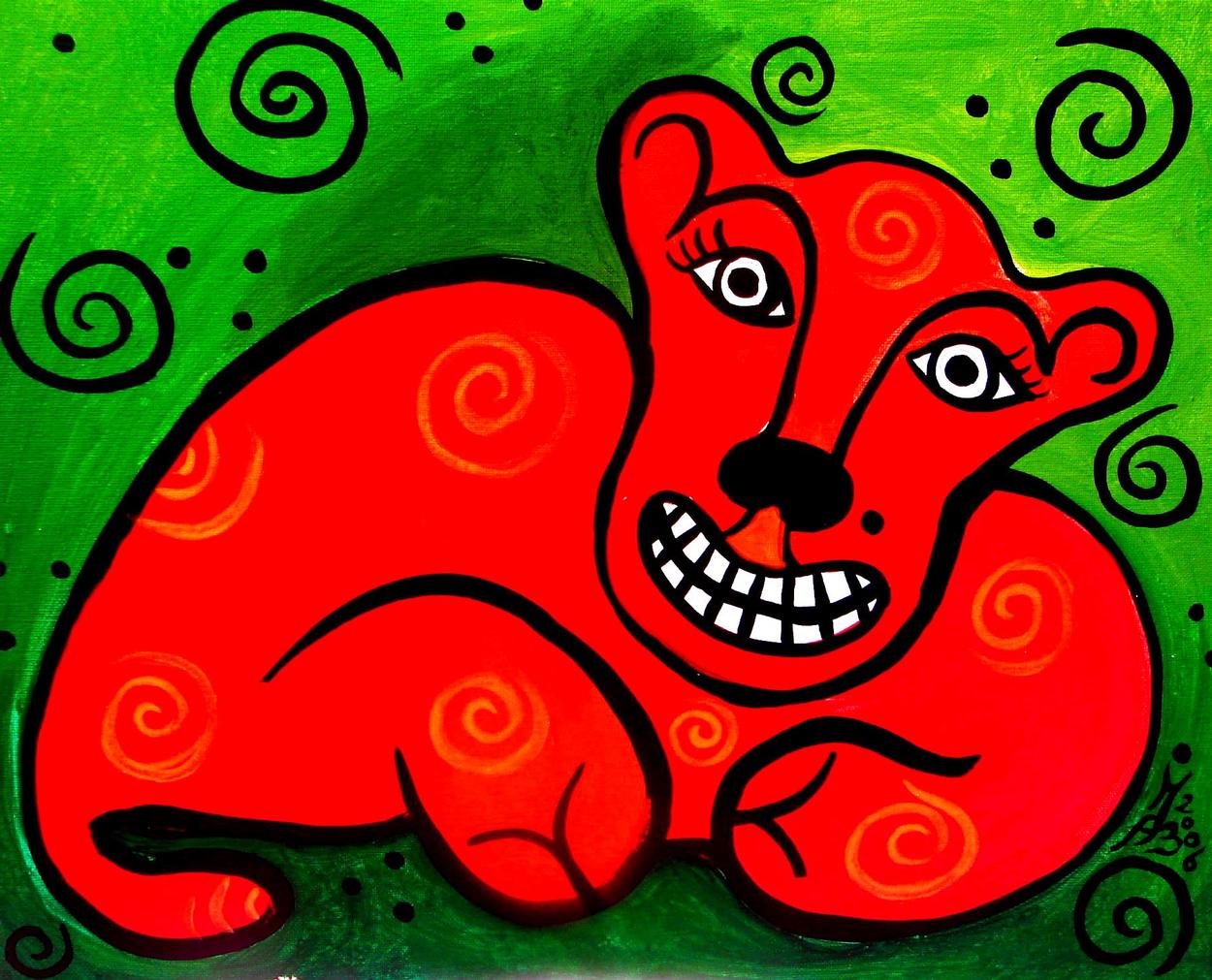
THE KUNA INDIANS OF KUNA YALA
In the summer of this year (2010) we sailed to Kuna Yala. This is a group of islands off the Caribbean coast of Panama, between Panama and Colombia. Panama calls these islands the San Blas islands. On these islands the Kuna Indians still observe their traditions and shamanic rituals in a pristine environment. They live in close harmony with nature, the spirits and the ancestors. The women wear traditional clothing and beadwork wrapped around their legs and arms.
In Kuna Yala every woman truly is an artist because all women make so called molas! These are panels (traditionally part of the blouses they wear) created in a technique called reverse applique combined with embroidery.
In spending time with the Kuna Indians are family had a very close encounter with one of the most isolated indigenous peoples of South and Central America. I will always treasure this memory and think of the Kuna Indians every day.